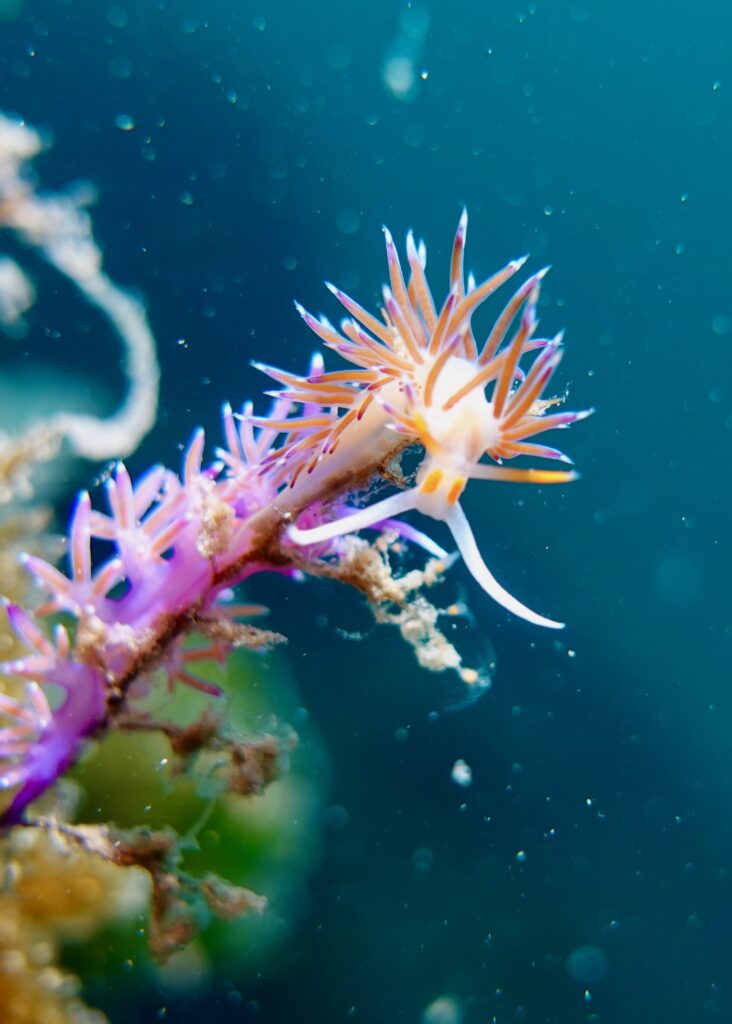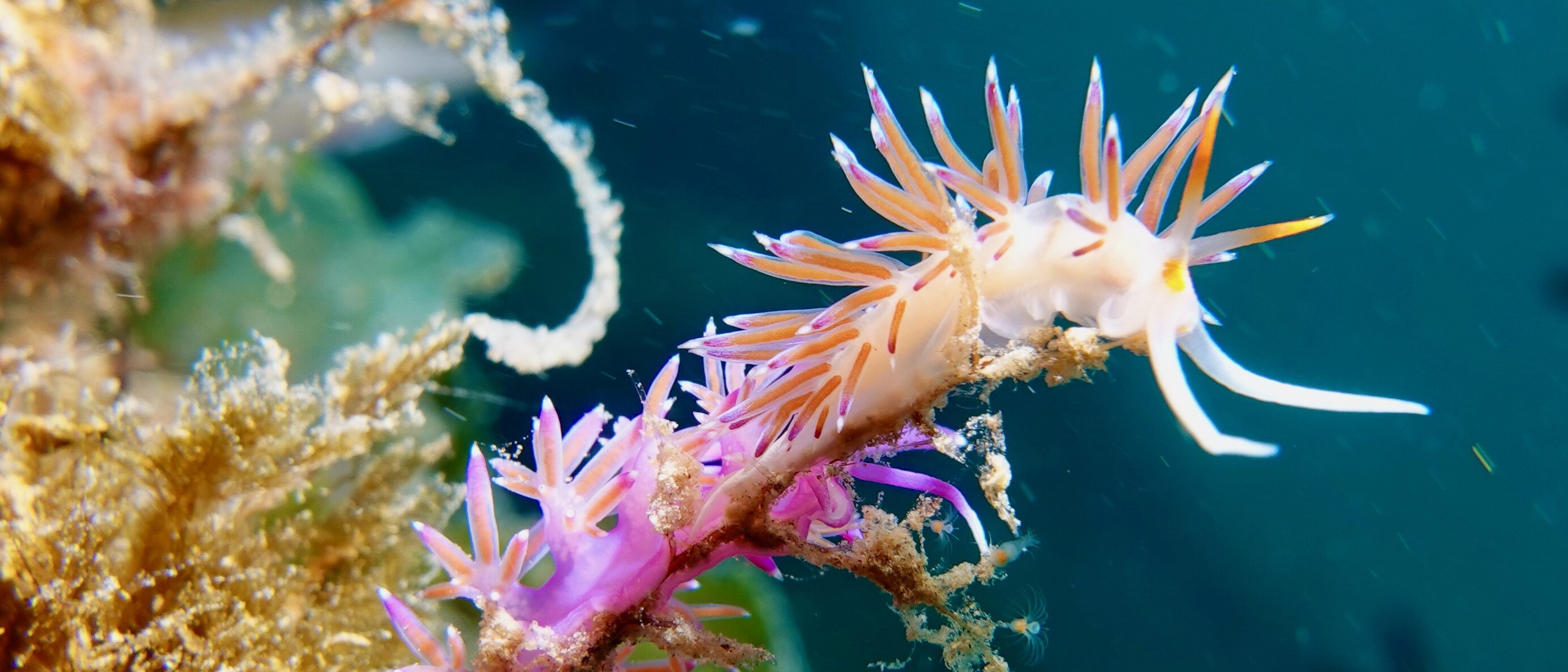Unveiling the Mysteries of Cratena Peregrina: The Nudibranch Enigma
Deep in the azure waters of the Mediterranean and parts of the Atlantic, a small but extraordinarily beautiful creature glides across the rocky seabed. Its presence is as ethereal as it is vibrant, painting the see floor with bursts of color. This creature is the Cratena peregrina, commonly known as the pilgrim hervia, an aeolid nudibranch that challenges traditional marine predation with its unique feeding strategy—kleptopredation.
A Dazzling Display

Cratena peregrina captivates with its slender, milky white body contrasted by colorful cerata—finger-like appendages that wave like tiny flags on its back. These cerata are not merely decorative; they serve as gills and are laden with extensions of the digestive gland, which can be bright red, purple, brown, or blue, often tipped with luminescent blue, adding to the slug’s otherworldly allure. The head of the slug is adorned with bright orange rhinophores and pale, horn-like buccal tentacles, creating an alien yet appealing appearance.
Habitat and Lifestyle
Thriving in clear, well-oxygenated waters, Cratena peregrina is usually found at depths of 5 to 50 meters. It spans a wide range from the Mediterranean Sea to the eastern Atlantic Ocean. In these environments, it plays a crucial ecological role, contributing to the biodiversity and energy flow of its ecosystem.
Kleptopredation: A Unique Feeding Strategy
What sets Cratena peregrina apart in the marine food web is its sophisticated method of feeding. Kleptopredation involves preying on hydroids just after they have consumed plankton, allowing the nudibranch to ingest not only the hydroid but also the plankton it has just captured. This dual feeding strategy maximizes the nutritional value from each hunting effort, showcasing an evolutionary adaptation both clever and effective.
Conservation and Research Importance
The unique dietary habits of Cratena peregrina offer a window into the complexities of food chains and predator-prey dynamics in marine ecosystems. Research on such creatures helps scientists understand biodiversity, the ecological impacts of marine species, and the potential consequences of environmental changes on these delicately balanced systems.
As we delve deeper into the study of fascinating marine life, Cratena peregrina stands out not only for its stunning beauty and intriguing behavior but also for the stories it tells about survival and adaptation in the vast underwater world. Its existence challenges our understanding of oceanic ecological dynamics and underscores the importance of continued exploration and conservation of our planet’s marine environments.
In the grand tapestry of marine biodiversity, Cratena peregrina is a true jewel of the sea, reminding us of nature’s capacity for wonder and innovation. As enthusiasts and protectors of marine life, we must ensure that such spectacular species continue to thrive, enlightening our understanding and inspiring awe for generations to come.
Kleptopredation exemplifies the complex interactions within food webs that can affect ecological and evolutionary relationships in marine environments, suggesting that this behavior may extend beyond nudibranchs as researchers continue to explore its presence in other species and its ecological impacts. The research led by marine ecologists like Trevor Willis* has opened new perspectives on the nutritional strategies of benthic molluscs and the broader implications for understanding energy transfer in marine food webs.
This enigmatic nudibranch continues to captivate scientists and nature lovers alike, offering endless inspiration and new questions in the pursuit of understanding life beneath the waves.
* The article by Trevor Willis that explores the concept of kleptopredation is titled “Kleptopredation: a mechanism to facilitate planktivory in a benthic mollusc.” This research was published in the journal Biology Letters, and it delves into the unique feeding strategy employed by the nudibranch Cratena peregrina, highlighting how this species not only consumes its hydroid prey but also the plankton that the hydroids have recently ingested. This study provides significant insights into the complexities of predator-prey interactions in marine ecosystems.

